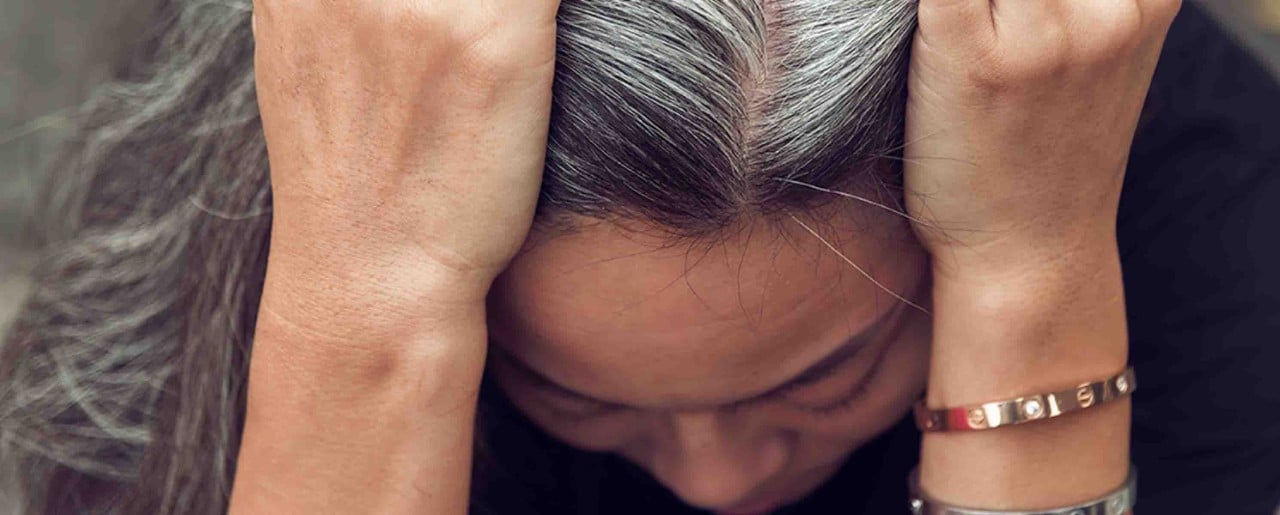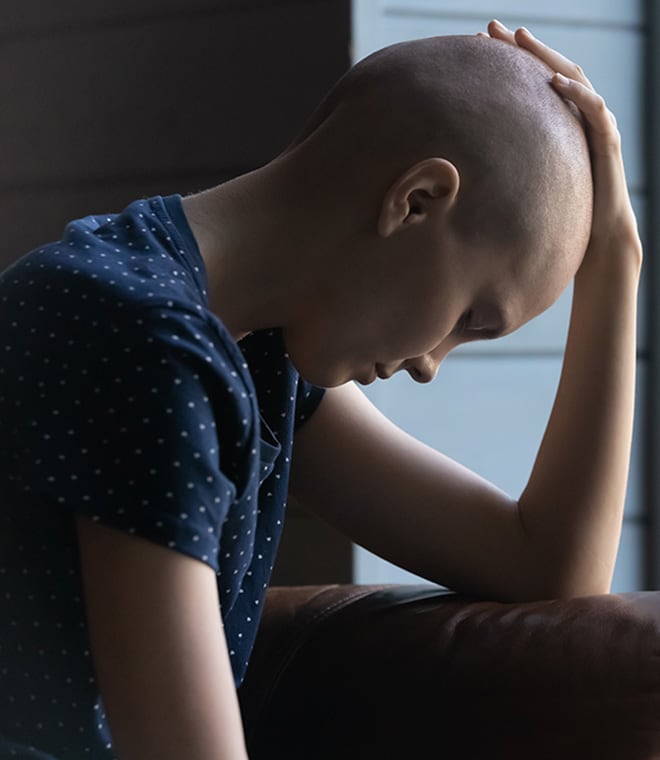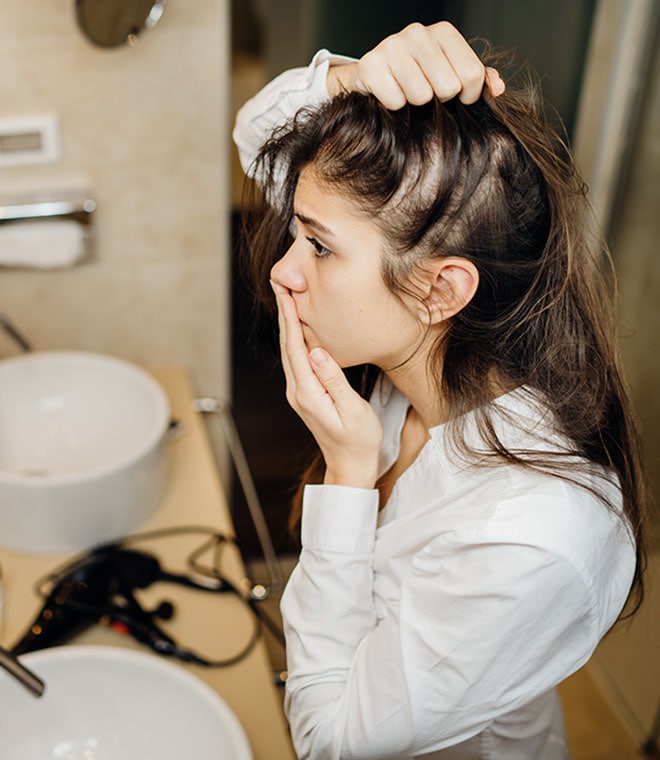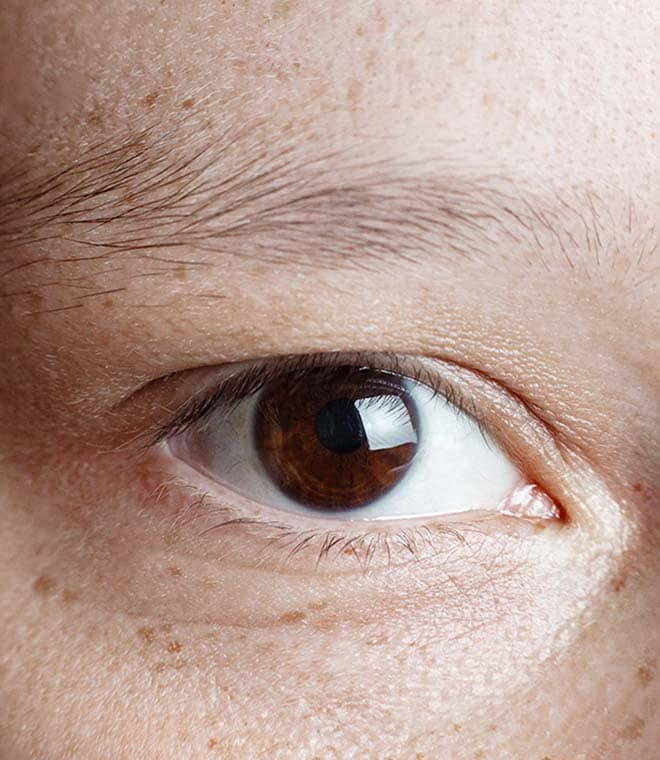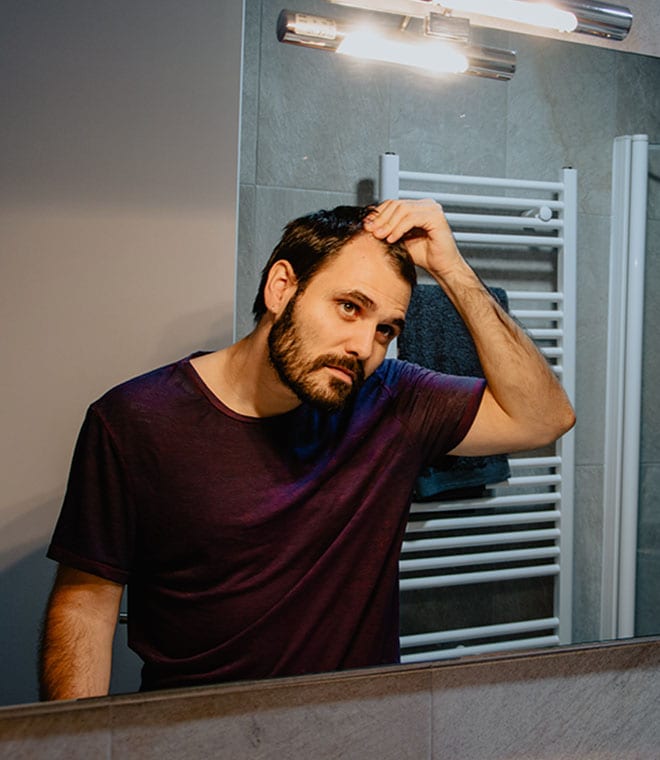Health
Hair loss causes and solutions for hair regrowth
By Dr. Anna H. Chacon, MD, Fellow of the American Academy of Dermatology May 21, 2024 • 14 min
The scalp contains around 100,000 hairs, and you naturally lose between 50 and100 hairs from your scalp each day. But some people lose far more than 100 hairs daily, and they may experience thinning hair, bald patches, partial baldness or total baldness. For many women and men, hair loss is embarrassing and even traumatic. But in many cases, hair loss can be treated or even reversed, depending on the cause.
Genetics and age-related hair loss
Your genes and your age may play a role in hair loss.
Genetics: The most common cause of hair loss worldwide is hereditary hair loss, also known as androgenic alopecia, which occurs in both men and women. In men, the condition is often referred to as male-pattern baldness because the hair loss often presents itself in a horseshoe-shaped pattern. However, this pattern is not present in all men. Hair loss may be more visible in men than in women. Women tend to experience hair loss in a different pattern compared to men. Androgenic alopecia is caused by genes that shrink your hair follicles, or pores, and prevent hair from growing. Although male- and female-pattern balding typically occur later in life, it’s possible to experience hereditary hair loss earlier, as early as the teenage years. Genetic hair loss can be treated with certain over-the-counter (OTC) treatments and prescription topical and oral medications.
Age: Hair growth slows with age in most people. For many, it stops altogether, and the hair begins to thin. Older people may also notice their hairline receding as they age. If age-related hair loss is treated early, some people may be able to regrow their hair with OTC or prescription treatments.
Illnesses and diseases that may cause hair loss
During periods of stress or illness, you may notice that your hair growth slows or stops, and you may lose more hair than usual in the shower or while you sleep. Once the stress or illness is under control, the hair usually grows back to its normal state within nine months.
Illnesses and medical conditions known to potentially cause hair loss include:
- Syphilis and other sexually transmitted diseases
- Ovarian or adrenal gland disorders or tumors
- Thyroid disease
- Anemia
- Autoimmune disorders like lupus
- Nutritional deficiencies, including low levels of zinc, protein, iron and biotin
- Alopecia areata, a disease that occurs when your immune system attacks the hair follicles and causes hair loss, which can be temporary.
Hair loss due to scalp infection or inflammation
Some infections of the scalp, and some conditions that cause inflammation of the scalp, can lead to temporary hair loss. Infections that may occur on the scalp include:
Scarring alopecia: Caused by inflammation that destroys hair follicles, scarring alopecia can be caused by a number of factors. Since the damaged follicles can’t grow hair at all, hair loss due to scarring alopecia can’t be reversed.
Scalp psoriasis: A common skin condition, plaque psoriasis affects the skin on many areas of the body. Many people who have psoriasis will experience symptoms on their scalp, and this can lead to hair loss. However, once the psoriasis clears, the hair typically regrows.
Ringworm of the scalp: This contagious fungal infection often causes itchy, pus-filled bumps and requires treatment with prescription medications. Once treated, the hair generally grows back.
Medication-related hair loss
Side effects of some medications may include hair loss. Chemotherapy or radiation treatment may result in total or near total hair loss within just a few weeks. Once treatment is complete, the hair typically begins to grow back within a few months. Cooling cap therapy before and after treatment may help reduce hair loss from chemotherapy in some people. Your dermatologist can also recommend medications that can help speed up regrowth. Talk to your healthcare provider before starting or discontinuing any type of medication.
Hormone-related hair loss
Various types of hormone imbalances can result in hair loss or thinning. Once the hormonal issue is resolved, the hair may grow back on its own. However, treatment can help spur or speed up regrowth. Common conditions that can cause hormone-related hair loss include:
- Polycystic ovary syndrome, or PCOS
- Menopause
- Starting or discontinuing certain birth control therapies
Friction or pulling hair loss
Constant friction or pulling from hair styling can cause hair loss, and it may be permanent. Known as traction alopecia, this type of hair loss is caused by pulling the hair back into a tight bun or ponytail. The condition may result in redness, bumps, soreness, itching or blisters on the scalp. The hair follicles can become damaged and scarred, leaving them unable to grow new hair.
Hair loss treatments: Do they work?
Hair loss treatments work for some people. When hair loss is caused by a medication, scalp infection or medical condition, it’s usually temporary, and the hair will likely grow back on its own once the condition is cleared up or the medication responsible for the hair loss is adjusted or stopped as directed. In cases of hereditary hair loss, the hair won’t regrow on its own, but certain medications and treatments can help with regrowth. Hair loss caused by the destruction of follicles due to a disease, injury or condition is often irreversible, and the hair loss can be permanent.
Not every type of hair loss is treatable, and it can take months before your hair begins to grow back. Even if your type of hair loss is generally treatable, not every treatment works for every person. You may need to try a variety of treatments or combinations of treatments to find one that works for you.
What type of doctor treats hair loss?
Healthcare providers are the experts in hair loss, including diagnosing the type of hair loss, identifying the cause, and recommending treatment. Over-the-counter (OTC) topical medications, prescription oral medications, and certain devices are used to treat hair loss in women and men.
At-home hair-loss treatments
Minoxidil (topical): An over-the-counter topical hair regrowth treatment, minoxidil is applied to the scalp daily. A commonly recommended treatment for male- and female-pattern hair loss, minoxidil may increase hair loss during the two to eight week period of starting use, but the loss will eventually stop, and the growth will begin. See your dermatologist or healthcare provider if minoxidil causes irritation, dryness, scaling, redness or itching. People with certain medical conditions should not use minoxidil. Be sure to read the product label and directions before use.
Laser treatment: Laser combs and laser caps are available to purchase for use at home. While early research shows promising results with these devices, more studies are needed to determine how well they work and for whom they’re most beneficial.
Microneedling: You can buy a microneedling device with hundreds of tiny needles for home use without a prescription. However, it’s best to talk to your dermatologist before you choose this treatment. Microneedling works best when used with another treatment, such as minoxidil or a topical corticosteroid.
In-office procedures for hair growth
Corticosteroid injections: Performed by a dermatologist, this procedure involves injecting corticosteroids into bald or thinning spots on your scalp. This treatment is particularly effective for treating alopecia areata, and it requires injections every four to eight weeks, or as needed.
Platelet-rich plasma: This procedure involves separating a small amount of your blood into plasma, platelets and red blood cells. The plasma is injected into the area where the hair loss has occurred. Platelet-rich plasma injections take about 10 minutes and need to be repeated every month for three months, and then once every three to six months afterward.
Laser therapy: In-office laser therapy treatment has been shown to help hair regrowth in people with hereditary hair loss, alopecia areata and hair loss related to chemotherapy. It can also stimulate hair growth after a hair transplant.
Prescription medications for hair regrowth
While there are several prescription treatments that can be helpful for reversing hair loss, all of these medications should be avoided by women who are pregnant, planning to become pregnant or breastfeeding:
Spironolactone: This diuretic medication for women helps prevent hair loss from worsening and can stop further hair loss and increase thickness of hair. Taken in pill form, spironolactone has been used successfully for decades to treat hair loss, including hereditary hair loss.
Finasteride: A prescription pill for hair loss in men, finasteride is taken daily to slow hair loss and promote new hair growth. It may cause a diminished sex drive. It may also increase the risk of prostate cancer in men and breast cancer in women. Women who are pregnant or could become pregnant should not touch or handle broken or crushed finasteride pills. This medication may harm the fetus.
Hair loss causes and solutions for hair regrowth
Although genetic hair loss may not be prevented, people can use treatments early to address the problem as soon as it starts. Taking good care of your scalp and hair are the best ways to prevent other types of hair loss.
Use as few harsh chemicals as possible. Chemical dyes, perms, relaxers and extensive heat treatments can damage your hair and follicles, resulting in hair loss. Once a follicle is damaged, hair can’t grow from it again, so it’s important to take proper care of your scalp to protect the follicles in your skin.
Be gentle with your hair. Use a gentle shampoo and don’t scrub your hair. Instead, gently massage the shampoo into your scalp, and let the water rinse it through your hair to clean it. Always apply a conditioner after shampooing, and use a detangling spray or leave-in conditioner to prevent breakage and pulling while you comb it out. When you comb or brush your hair, do it gently and as little as you possibly can.
Take it easy with the heat. Use a microfiber towel instead of a cotton towel to remove more water from your hair so you can spend less time blowing it dry. When you can, set your blow dryer to low heat or allow your hair to dry naturally instead. Avoid hot rollers, curling irons, and straightening devices as much as possible.
Don’t color, perm, chemically straighten or relax your hair at home. Kits for home hair treatments can be generally lower quality than salon treatments, and if you use them improperly, you can do serious damage to your hair that could eventually lead to hair loss. Find a salon for coloring, perming, relaxing or straightening your hair.
Don’t twist, pull or put up your hair. Wear your hair down whenever possible to avoid pulling on it too much. Avoid wearing your hair in braids, buns and ponytails. Also try to avoid twisting hair around your fingers or pulling on it out of habit.
Enjoy a healthy lifestyle. Unhealthy food, nutritional deficiencies, undereating and smoking can promote hair loss and make it harder to grow back.
When to make an appointment with your dermatologist
As soon as you notice your hair beginning to thin or fall out, make an appointment with your dermatologist or healthcare provider. Because there are so many causes of hair loss, identifying and treating the cause before the condition worsens can help you keep more hair and promote new growth. Not every hair loss treatment works for every type of hair loss, but trying out treatments based on the cause of your hair loss can help you regrow your hair and improve your self-esteem.
Clinically reviewed and updated by Julie McDaniel, MSN, RN, CRNI, May 2024.
Sources:
- https://www.aad.org/public/diseases/hair-loss/causes/18-causes
- https://www.aad.org/public/diseases/hair-loss/treatment/diagnosis-treat
- https://www.ncbi.nlm.nih.gov/pmc/articles/PMC6388756/
- https://www.aad.org/public/diseases/hair-loss/types/female-pattern
- https://medlineplus.gov/genetics/condition/androgenetic-alopecia/
- https://www.aad.org/public/diseases/hair-loss/treatment/tips
- https://www.fda.gov/consumers/consumer-updates/microneedling-devices-getting-point-benefits-risks-and-safety
- https://www.ncbi.nlm.nih.gov/pmc/articles/PMC3986893/
- https://www.ncbi.nlm.nih.gov/books/NBK513312/
- https://www.hopkinsmedicine.org/health/conditions-and-diseases/hair-loss
- https://www.health.harvard.edu/a_to_z/hair-loss-a-to-z
- https://www.health.harvard.edu/diseases-and-conditions/vitamins-minerals-and-hair-loss-is-there-a-connection
- https://www.mayoclinichealthsystem.org/hometown-health/speaking-of-health/scalp-cooling-therapy-prevents-hair-loss-during-chemotherapy
- https://nyulangone.org/conditions/hair-loss/types
- https://www.aad.org/public/diseases/hair-loss/causes/hairstyles
- https://jamanetwork.com/journals/jamadermatology/fullarticle/2804567
- https://medlineplus.gov/druginfo/meds/a698016.html
